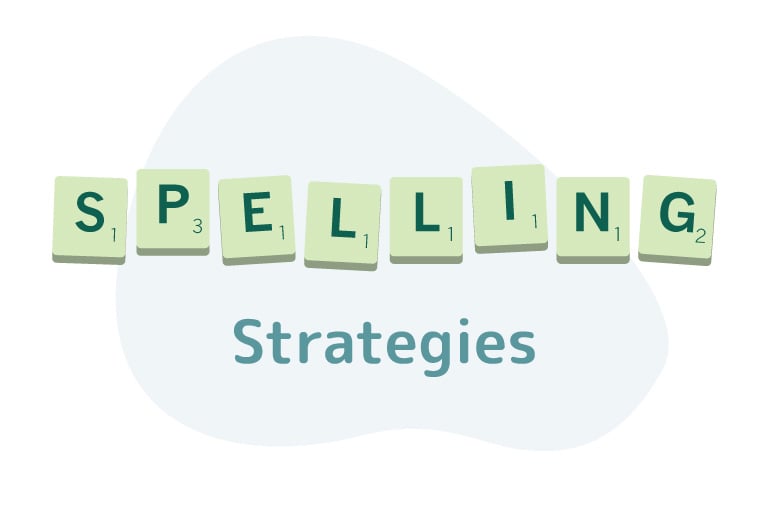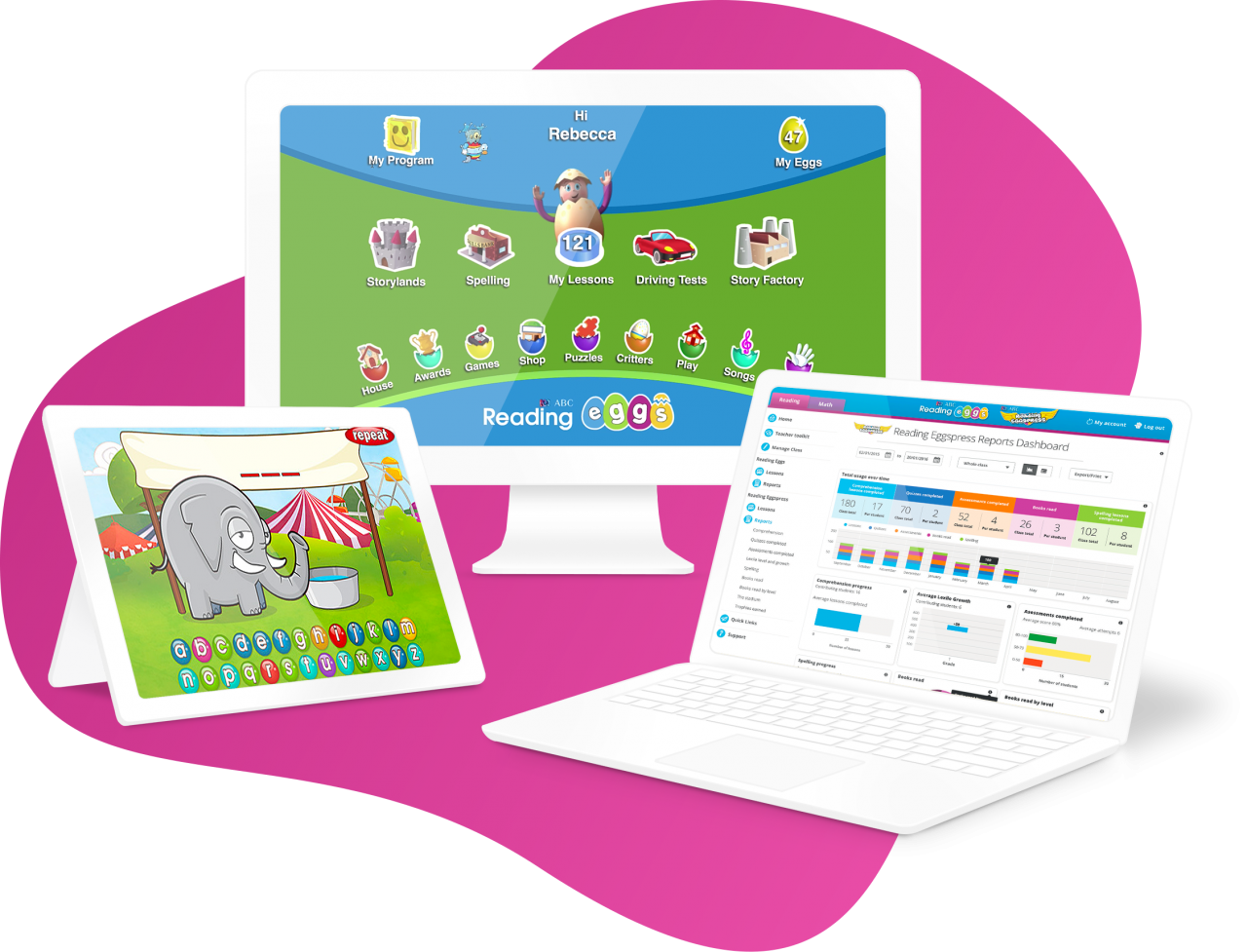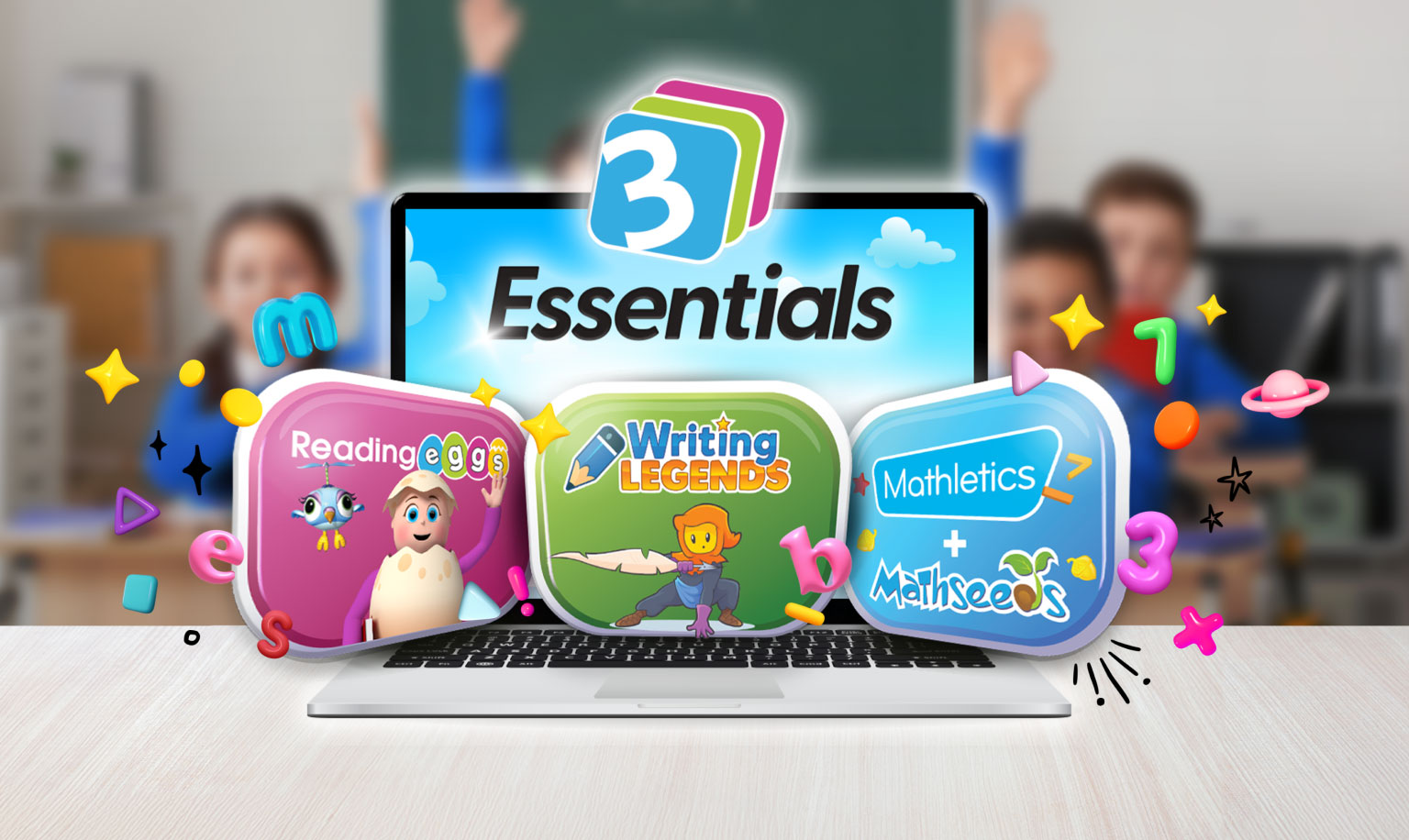
For decades, the teaching of spelling has relied heavily on rote learning.
While memorisation has its place, truly effective spelling strategies should also empower students to learn new words independently.
Here are 6 strategies that will give you a break from drilling word lists while equipping your students with spelling confidence.
Spelling strategies for early learners
Chunking
Break words into chunks that are easier to spell (e.g. “planting” can be broken down into [pl] [ant] [ing]). Students will start to recognize familiar patterns and sometimes even find familiar words within new ones.
You can model this process at first, but students should come to do it independently whenever they’re faced with a long or unfamiliar word. Encourage the habit by:
- using a graphic organizer where the individual chunks are clearly separated
- having students write words with different colors for each chunk
- having students cut up a series of words into chunks, which can then be color-coded so they find common patterns (e.g. all “ch” cut-outs are blue).
Rhyming
Rhymes will show students how common sounds often translate to common spellings. Introduce the concept aurally through songs and nursery rhymes and then create rhyming word lists.
Model how changing a single letter in a short word can create rhyme with similar spelling (e.g. “dog”, “fog”, “log”). Students can then see how many words of their own they can generate from a single root (stick to simple words like “all”, “sing”, and “hat”).
Encourage phonetic spelling
Have students spell words phonetically (as they hear them) before memorizing the correct form. It might lead to a few mistakes, but they’ll also realise most words have at least one part that looks exactly like it sounds.
Here’s a phonetic spelling strategy you can use for new words.
- Slowly read the new word to the whole class, emphasizing each syllable.
- Students write the word as they hear it.
- Have students share the spellings of the individual sounds in the word (“So how did we spell the first “thr” sound in “through”?)
- Have students self-check each phoneme against the correct spelling (e.g. the first three letters of “thru” are correct, so that’s a tick).
- Discuss the strategies students used to find or remember the correct spelling of each individual phoneme (e.g. comparing it with more familiar words, using a rule).
- Revise mistakes and come up with new ways of remembering the hard-to-spell parts of the word (e.g. students could create a mnemonic).
The best part of this strategy is that it builds confidence. Students might not spell the whole word correctly, but they’ll realize that they can get plenty of parts correct if they just spell what they hear.

Did you know? Reading Eggs is an award-winning literacy program with over 300 spelling lessons
Spelling strategies for more advanced students
Teach common spelling patterns with word families
Group word lists according to their structure, so students can see the common patterns governing “families” of words. Students will be able to apply these patterns to new vocabulary – even if they haven’t seen the words before in class.
Consider grouping word lists by:
- Prefixes
E.g. pre-, un-, and re- words. Define the prefix itself so students begin to associate a semantic pattern with the spelling.
- Suffixes
E.g. -ness, -able, -en. As with prefixes, teach students the meaning. You can also take a root word and have students add the suffixes they think will “work”. That way they’ll be putting the spelling patterns into practice of their own accord.
- Root words
Students can customize common words with prefixes and suffixes (e.g. joy: joyful, joyless, overjoyed). More advanced learners could even explore Greek and Latin roots (e.g. “path” stems from the Greek pathos, meaning “hurt” or “feel”. How many words describing feelings use this spelling pattern?)
- Graphemes
Graphemes are groups of letters that represent particular sounds (e.g. thr- in through, thrust, and throw). Teaching them will give students a spelling clue each time they hear a new word with a familiar sound.
It’s also a good idea to focus on words that use the same grapheme for different sounds (e.g. “our” in tour, court, and sour). That way a single, known spelling pattern can be used for multiple sounds.
Use rule-based strategies
Once rules are second nature, students will be able to spell thousands of words independently. Here are 5 common spelling rules to start:
- Double the consonants “f”, “s”, and “l” in one-syllable words with a single vowel (e.g. full, pass, staff).
- If you add a suffix to a word ending in “y”, the “y” changes to an “I” (e.g. try becomes tried).
- Use “-k” or “-ck” instead of “c” when a word ends in the /k/ sound. “-K” for words with long vowel sounds (e.g. “silk”), “-ck” for short vowels (e.g. “pick”).
- Put a silent “e” after a “v” at the end of a word (e.g. “pave”, “have”).
- Q and u are always a pair (“quest”, “queen”).
Use mnemonics (memory aids) to introduce spelling rules in a student-friendly way. These might be rhymes, allegories, or even images – anything that helps students remember. Don’t worry if it sounds absurd! For example:
- L, f, and s get lonely when there aren’t enough other letters to keep them company. So give them a twin!
- Y becomes I when the suffix says “hi”.
- I need U, says Q.
Tip: have students write and store the rules in a place where they can see them (they could visualise them too, with cartoons and color), and make it a habit for them to check the rules independently after each practice activity.
Self-checking
No matter how many words we cover in class, our students will always be confronted with new words they can’t spell. This is where a dictionary comes in handy.
Teach your students how to use online and physical dictionaries to check their spelling. This can involve strategies such as:
- thinking of alternative spellings, so you can find the word if your predicted spelling isn’t correct
- searching for related terms or a definition on the internet, so the word comes up even if you don’t know how it’s spelled
- spelling phonetically and taking note of autocorrections.
Giving your students access to a dictionary also empowers them. They’ll know that a world of new words is only ever a few clicks away, and no spelling is ever beyond their reach.
Need more help with spelling?
We’ve got you covered. Take a look at Reading Eggs – our award-winning literacy program with over 300 spelling lessons.











